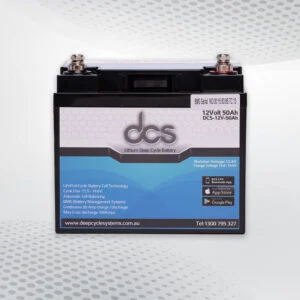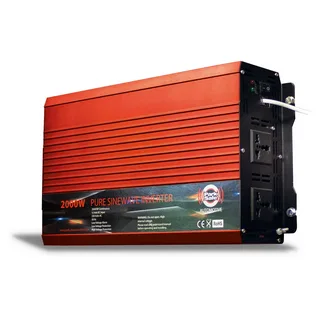In today’s fast-paced world, having a reliable backup power solution is more important than ever. Unexpected outages can disrupt daily life, making it essential to ensure that battery systems operate at peak performance. Enter the Victron Battery Monitor Temperature Sensor—a game-changer for anyone serious about maintaining their energy storage systems.
This innovative device tracks battery voltage and current and monitors temperature fluctuations that could impact battery health and efficiency. Rising temperatures pose threats to lithium-ion and lead-acid batteries alike, so understanding how heat affects these components is crucial for longevity and reliability.
Understanding the Importance of Battery Temperature Monitoring
Battery performance is closely tied to temperature. High temperatures can lead to reduced capacity and a shorter lifespan, while cold conditions may cause sluggish responses or even failure to start. Monitoring battery temperature becomes crucial in preventing these extremes. It helps identify potential issues before they escalate into serious problems.
Additionally, accurate temperature readings allow for optimal charging practices. Batteries charge differently depending on their thermal state, meaning understanding this aspect can significantly enhance efficiency. With the Battery Monitor Temperature Sensor, users gain real-time insights into their battery’s health. This proactive approach ensures reliability in power systems and peace of mind during critical situations. Having precise data empowers users to make informed decisions about their battery maintenance strategies.
Key Features of the Battery Monitor Temperature Sensor
Understanding the Battery Monitor Temperature Sensor can help you make informed decisions about your battery management system. This sensor provides real-time temperature data, which is crucial in ensuring optimal battery performance and longevity.
Accurate Temperature Readings
The Battery Monitor Temperature Sensor delivers precise temperature measurements for monitoring battery health. Accurate readings help prevent overheating and undercooling, negatively impacting battery performance and lifespan.
Enhanced Battery Protection
The sensor continuously monitors the battery temperature and allows for timely intervention if temperatures exceed safe limits. This proactive approach helps protect batteries from potential damage caused by extreme temperatures, ensuring they operate within their ideal temperature range.
Seamless Integration
Designed to work seamlessly with Victron’s battery monitoring systems, the temperature sensor integrates effortlessly with existing setups. This ease of integration makes it a valuable addition to any battery management system, providing a straightforward way to enhance your battery monitoring capabilities.
Data Logging and Analysis
The sensor supports data logging features that allow you to track temperature trends over time. This data is useful for analyzing battery performance and identifying any issues related to temperature fluctuations. Understanding these trends can help you make informed battery maintenance and replacement decisions.
Durability and Reliability
Constructed with high-quality materials, the Battery Monitor Temperature Sensor is built to withstand harsh conditions. Its durability ensures reliable performance in various environments, making it a dependable component of your battery management system.
The Battery Monitor Temperature Sensor is critical for maintaining optimal battery performance. Its accurate readings, protection features, seamless integration, and durability make it an excellent investment for anyone looking to improve battery management.
How the Temperature Sensor Enhances Battery Life
Battery performance is heavily influenced by temperature. Extreme heat or cold can reduce efficiency and lifespan. The Battery Monitor Temperature Sensor plays a crucial role in this aspect. By constantly monitoring battery temperatures, the sensor provides real-time data that helps users make informed decisions. When temperatures exceed optimal levels, the system can trigger alerts for immediate action.
This proactive approach protects batteries from damage and ensures they operate within their ideal range. Keeping batteries cool prevents degradation of internal components, maintaining overall health. Moreover, consistent monitoring allows adjustments to charging cycles based on temperature readings. This tailored management enhances charge acceptance and storage capacity over time. With the Victron Temperature Sensor, users experience longer-lasting batteries while benefiting from reliable backup power solutions tailored to various environmental conditions.
Installing the Victron BMV Temperature Sensor for Accurate Battery Monitoring
Accurate battery monitoring is crucial for maintaining the health and efficiency of your energy system. One essential component for precise monitoring is the Victron BMV Temperature Sensor. This device helps ensure that your battery operates within its optimal temperature range, which can significantly impact its performance and longevity.
Understanding the Importance of Temperature Monitoring
Temperature fluctuations can affect battery efficiency and lifespan. High temperatures can accelerate chemical reactions within the battery, leading to reduced lifespan, while low temperatures can decrease battery performance. By installing a temperature sensor, you can monitor these fluctuations and make necessary adjustments to protect your battery.
Choosing the Right BMV Temperature Sensor
The BMV Temperature Sensor is designed specifically for use with Victron battery monitors. It provides real-time temperature readings, informing you about the battery’s condition. Ensure compatibility with your existing Victron system to get the most accurate readings.
Step-by-Step Installation Guide
- Locate the Sensor Connection Point: Identify the connection point on your Victron BMV battery monitor where the temperature sensor will be attached.
- Prepare the Sensor: Unbox the BMV Temperature Sensor and ensure you have all necessary components, including wires and connectors.
- Install the Sensor: Attach the sensor to the battery’s temperature-sensitive area. Secure it properly to avoid any movement that could affect readings.
- Connect the Sensor to the Monitor: Plug the sensor into the designated port on the Victron BMV monitor. Ensure the connection is firm and secure.
- Calibrate the System: Follow the manufacturer’s instructions to calibrate the temperature readings on your Victron BMV monitor.
Testing and Adjustments
After installation, monitor the temperature readings over some time to ensure accuracy. Based on these readings, make any necessary adjustments to your system to optimize battery performance and longevity.
By incorporating the BMV Temperature Sensor, you enhance your ability to manage and protect your battery system effectively.
Connecting the Sensor to Your Battery Monitoring System
Connecting the Battery Monitor Temperature Sensor to your battery monitoring system is straightforward. First, ensure that all components are powered off to avoid any electrical mishaps. Then, identify the appropriate terminals on the battery monitor unit. Typically, there will be designated input points for temperature sensors. Next, carefully attach the sensor’s leads to these inputs. Make sure connections are secure but not overly tight, as this can damage delicate wires.
Once connected, power up your system and verify that the temperature readings appear correctly on your display. If they don’t show up immediately, double-check all connections for security and proper placement. This setup allows accurate real-time monitoring of battery temperatures, ensuring optimal performance and longevity of batteries within various applications such as RVs or solar energy systems.
Calibrating the Temperature Sensor for Accurate Readings
Calibrating the Battery Monitor Temperature Sensor is essential for ensuring precise readings. An accurate temperature measurement directly affects battery performance and longevity. To begin, find a stable reference point for calibration. Using a reliable external thermometer can help verify the sensor’s accuracy.
Next, ensure the sensor is securely attached to the battery terminal or nearby area you wish to monitor. This placement allows it to capture true ambient temperatures affecting battery performance. Access the settings on your Victron monitoring device and locate the calibration option. Adjust according to discrepancies between your external thermometer and the temperature sensor reading. Once calibrated, regularly check for any deviations over time as environmental conditions change. Frequent adjustments may be necessary in fluctuating climates to maintain optimal accuracy with the Battery Monitor Temperature Sensor.
Interpreting Temperature Data from the Battery Protector Monitor
Interpreting the temperature data from the Battery Monitor Temperature Sensor is essential for effective battery management. Each reading is a vital indicator of your battery’s health and performance. When temperatures rise above recommended levels, it may signal overcharging or environmental stress. Recognizing these signs early can prevent irreversible damage to batteries.
Conversely, low-temperature readings indicate inadequate charging efficiency. This situation can lead to reduced capacity and potential failure during critical moments. Regularly monitoring these figures allows users to make informed decisions regarding cooling solutions or charge adjustments. It’s all about maintaining optimal conditions for longevity. Pay attention to patterns in temperature fluctuations throughout different operating scenarios. This insight helps us understand how various factors impact Battery Protector life and effectiveness under load conditions. Analyzing this data gives one a clearer picture of when maintenance is needed or if system upgrades are warranted.
Troubleshooting Common Issues with the Temperature Sensor
When using the Battery Monitor Temperature Sensor, issues that can affect its performance may arise. One common problem is inaccurate temperature readings, which often result from poor connections or damaged wires. Checking for secure wiring and replacing any frayed cables can resolve this. Another issue could be the sensor not responding at all, which might indicate a faulty unit or an installation error. Ensuring the sensor is correctly connected to your monitoring system is essential.
Sometimes, users may notice fluctuations in readings during operation. Ensure no nearby heat sources affect the sensor’s accuracy, as environmental factors can skew data. If alerts seem inconsistent or missing, reviewing your settings within the battery monitoring interface could clarify potential configuration errors. Keeping these troubleshooting tips handy enhances user experience and ensures reliable energy management.
Maintaining and Cleaning the Battery Isolator Victron Temperature Sensor
Regular maintenance of the Battery Isolator Victron Monitor Temperature Sensor ensures optimal performance. Dust and debris can accumulate over time, affecting readings. It is essential to keep the sensor clean for accurate monitoring. Start by disconnecting the sensor from its power source. Use a soft cloth or microfiber towel to wipe down its surface gently. Avoid using harsh chemicals that might damage components.
Inspect the wiring for signs of wear or corrosion. Consider replacing wires immediately to prevent false readings if any issues are detected. Check mounting points as well; they should be secure and free from rust or moisture accumulation. Proper installation helps maintain integrity and function. Ensure that connections remain tight during routine checks to avoid disruptions in data flow. Regular attention will help extend the lifespan of this crucial component in backup power solutions.
Conclusion
The Victron Battery Monitor Temperature Sensor is essential for anyone relying on battery backup systems. Its ability to monitor temperature ensures optimal performance and longevity of the batteries. Investing in this sensor means safeguarding power solutions against potential failures caused by extreme temperatures. It enhances reliability and safety, allowing users peace of mind. With proper installation and calibration, this device can significantly improve efficiency. Understanding how to interpret its data further empowers users to make informed decisions about their energy needs. Regular maintenance also contributes to the sensor’s accuracy, ensuring consistent monitoring over time.
FAQS
What exactly does the Victron Battery Monitor Temperature Sensor do?
The Victron Battery Monitor Temperature Sensor, providing real-time data that helps optimize charging cycles and reduce risks associated with overheating or freezing temperatures.
How do I know if my temperature readings are accurate?
Calibration is key for accuracy. Regularly check against known temperature standards to ensure your sensor provides reliable information.
Can I install Victron Temperature Sensor myself?
Yes, installation is relatively straightforward and can usually be completed in a few steps without professional help.
Is it necessary to clean the sensor regularly?
While not mandatory, periodic cleaning will help maintain optimal functionality by preventing dirt buildup that could affect readings.
What should I do if my temperature monitor shows unusual readings?
First, verify connections and recalibrate if needed; persistent issues might require consulting customer support or replacing faulty components.




